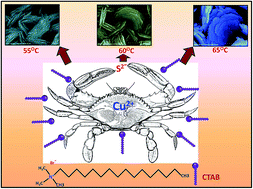Stacked Cu1.8S nanoplatelets as counter electrode for quantum dot-sensitized solar cell
Abstract
It is found that the electrocatalytic activity of Cu2−xS thin films used in quantum dot-sensitized solar cells (QDSSCs) as counter electrode (CE) for the reduction of polysulfide electrolyte depends on the surface active sulfide and disulfide species and the deficiency of Cu. The preferential bonding between Cu2+ and S2−, leading to the selective formation of a Cu1.8S stacked platelet-like morphology, is determined by the cetyl trimethyl ammonium bromide surfactant and deposition temperature; the crab-like Cu–S coordination bond formed dictates the surface area to volume ratio of the Cu1.8S thin films and their electrocatalytic activity. The Cu deficiency enhances the conductivity of the Cu1.8S thin films, which exhibit near-infrared localized surface plasmon resonance due to free carriers, and UV-vis absorption spectra show an excitonic effect due to the quantum size effect. When these Cu1.8S thin films were employed as CEs in QDSSCs, a robust photoconversion efficiency of 5.2% was obtained for the film deposited at 60 °C by a single-step chemical bath deposition method.


 Please wait while we load your content...
Please wait while we load your content...